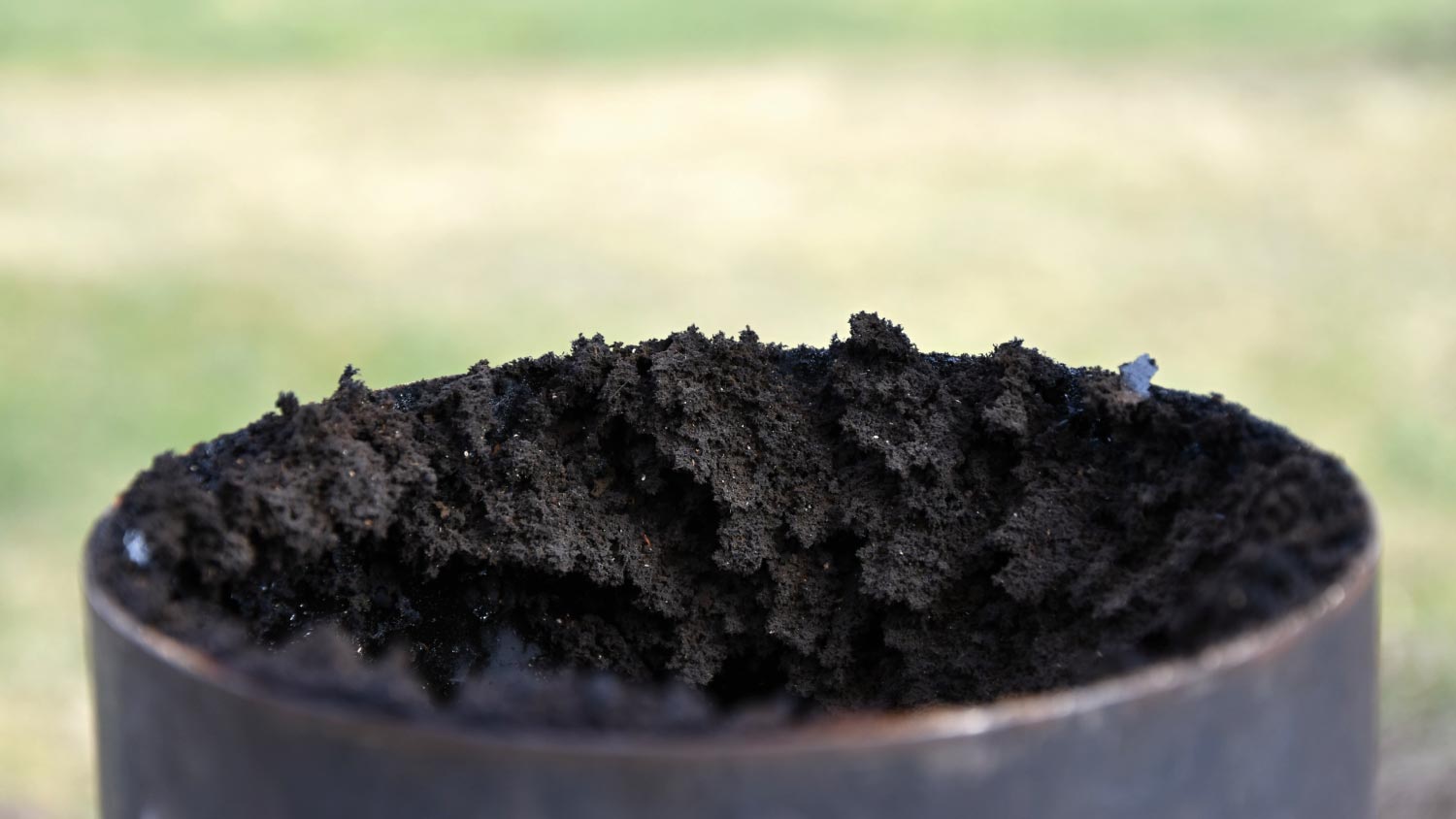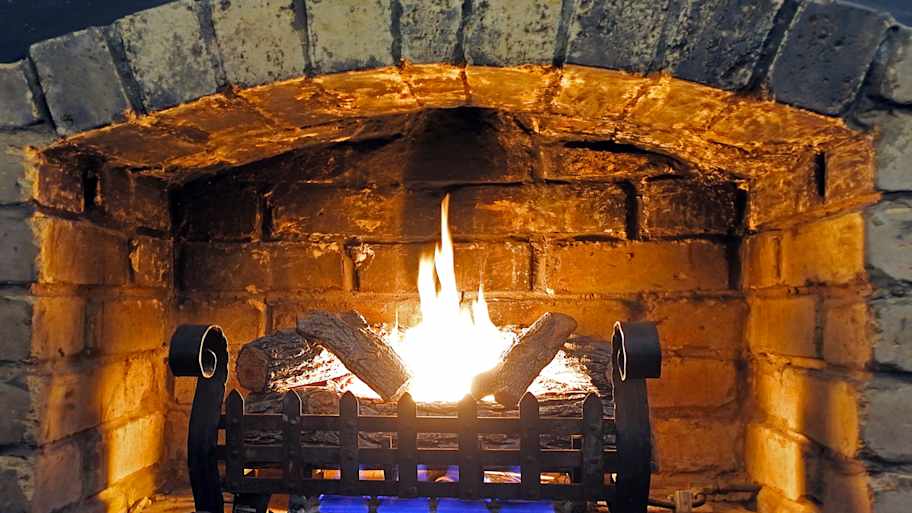
Chimney sweep costs can be dramatically affected by the type of chimney, its location, and how dirty it is.
Get fired up with this guide on everything you need to know about creosote


Creosote is a byproduct of wood combustion.
It solidifies and sticks to the chimney liner as smoke contacts outside air and moisture.
Creosote is highly flammable.
Deep-clean your chimney after every use to eliminate creosote buildup.
Increase your fireplace’s ventilation to minimize buildup.
Nothing beats a fireplace during those harsh winter months. The gentle crackle of the fire and the pleasing warmth help make a house feel like, well, home. However, avid fireplace users have likely heard of a dangerous thing called creosote. What is this substance, and how does it impact your chimney? Keep reading to find out.

Creosote is a natural byproduct of wood combustion, consisting mainly of tar and other trace chemicals. You’ll find tiny amounts of creosote anytime smoke rises from an open flame. Interestingly, it’s creosote that gives “smoked” meat its distinctive flavor and scent, which is why some chefs prefer older and much-used ovens over newer ones for specific cooking tasks.
If creosote floated around in smoke particles and then dissipated, there would be no danger. Creosote, however, is highly flammable, thanks to its tar-based composition and often sticks to various parts of a fireplace and chimney. In other words, large creosote buildups lead to chimney fires, potentially wrecking your chimney, fireplace, and mantle. So, yes, the stuff is dangerous, and dealing with it properly is an essential fireplace maintenance step.
A chimney offers plenty of opportunities for the creosote to solidify and build up over time. When the smoke travels upward and mixes with cold air and moisture near the top of your chimney, it hardens and sticks to the chimney liner or the brickwork itself.
Also, creosote doesn’t go away on its own. Instead, it keeps “growing” in a never-ending cycle, eventually coating the chimney flue walls entirely. This narrows the passageway and restricts ventilation leading to—you guessed it—even more creosote.
Not really. Unfortunately, creosote and fireplaces go together like peanut butter and jelly. A little creosote is fine, though, as it only presents a danger with significant buildup. Luckily, there are some sure-fire ways to minimize the amount of creosote in your fireplace and chimney.
The only way to completely eliminate creosote is never to use your fireplace. Obviously, that’s a non-starter for those who love being warm and roasting chestnuts during the holidays. Don’t worry, though. Putting a “closed for business” sign on your fireplace isn’t the only way to significantly reduce the risk of creosote.
This is overkill to some, as small amounts of creosote don’t pose a danger for fires or blockages. But if you really want to put the kibosh on the substance, deep-clean your fireplace and chimney after every use. You can also hire a local top-rated chimney sweep or chimney cleaner near you for best results, but cleaning a chimney costs over $120 a pop.
If you’re keeping up with your chimney cleaning, the creosote is likely just soot and easily removable with a specialized brush. Once it hardens, chemical solvents and rotary loop devices come into play. Most homes get by with one professional cleaning each year. If you want to eliminate that yearly cost, thoroughly clean out the fireplace soot after every two to three uses.
Creosote is a known problem, and, as such, products exist to help. One such product is a creosote sweeping log (or CSL, for short). These creosote sweeping logs work and loosen up any buildup, softening the texture of the creosote and simplifying the cleaning process. You use them like any other log. Just place them in a lit fireplace and let them go to work. Small- to medium-size fireplaces require one log, while larger fireplaces need two. If you’re using two, do so one at a time to prevent excess flames.
Poor chimney and fireplace ventilation not only creates weak fires and excess smoke but also helps creosote thrive and expand. Improve your chimney’s ventilation in several ways:
Make sure the chimney damper is open. When closed or stuck, it obstructs the airway up to the flue and dramatically hinders ventilation.
Open a window in your home. Modern houses aren’t always designed with proper fireplace use in mind. Chimneys require lots of air, so an open window creates a nice draft for it to draw from.
Prime a cold chimney before lighting a fire. Cold chimneys decrease ventilation, so warm the flue by holding a newspaper roll up to the opening, allowing it to burn completely before lighting the kindling.
Stick to properly seasoned firewood. Wet, fresh, or “green” wood burns incompletely, as it hasn’t dried the necessary three to six months. The end result? A weak fire with minimal heat that won’t push the smoke up the chimney.
In addition to professional cleanings by chimney sweeps, hire a local fireplace inspector for a real-deal inspection. These pros have plenty of experience with identifying creosote, and they’ll let you know if the buildup presents an obstruction or fire hazard.
As an added bonus, professional inspectors suss out any other damage and potential issues to both the fireplace and chimney, including animal-related structural issues, cracks, and anything else impeding regular use. They’ll even let you know if a replacement fireplace is in your future, and they can recommend a good chimney sweep for clearing out that creosote.
From average costs to expert advice, get all the answers you need to get your job done.

Chimney sweep costs can be dramatically affected by the type of chimney, its location, and how dirty it is.

Drab-looking chimney bricks can make your home look unkempt. This guide will help you learn how to clean chimney bricks without damaging the structure.

Your chimney sweep may not wear a top hat and dance on the ceiling, but they will keep your home safe by providing chimney inspections and cleanings. Follow these steps to learn how to hire a qualified and trusted chimney sweep in your town.

When comparing vented versus ventless gas logs, vented logs are better for ambiance, while ventless gas logs are easier to install and heat a room efficiently.

Regular chimney cleaning keeps your fireplace running safety and efficiently. But who cleans chimneys? Our guide explains which pro is best for the job.

Wondering how often to clean a chimney? Our guide will walk you through the recommended frequency, best time of year, and common signs your chimney’s due for a cleaning.